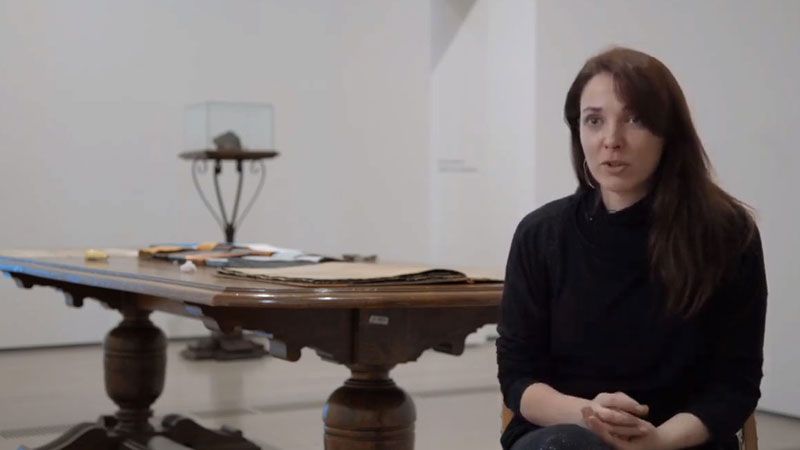The exhibition
ITINERARIOS XXV
From February 16, 2019 to May 12, 2019
Curated by: Benjamin Weil, art director of Centro Botín.
2019 marks the twenty-fifth anniversary of Itinerarios, the annual exhibition of works by recipients of a Fundación Botín Visual Arts Grant. This yearly showcase of most recent art is presenting the work of eight artists who received grants from Fundación Botín in 2017: Nora Aurrekoetxea, Fernando García, Cristina Garrido, Fermín Jimenez Landa, Rosell Meseguer, Shirin Sabahi, Blanca Ulloa, and Celia-Yunior & Henry Eric Hernández.
A jury comprising artists and other artworld professionals was commissioned to select the recipients of the grant based on the quality and the relevance of the proposals. The selection provides an interesting insight into recent trends in contemporary art and helps us to decipher the evolution of art practice, as it reflects the changing world those artists live in.
Installation has become a medium of choice for artists today, and all the projects presented this year engage with that form in one way or another, and are composed of a large number of elements: sculptures or found objects, drawings, texts, photographs and/or video, which are interrelated with each other and with the exhibition space, both physically and conceptually.
A visit to an exhibition is a somewhat rarefied moment when time seems to slow down, and the space less saturated with information. The time and space of art is one of reflection and contemplation, which fosters critical thinking and a deeper understanding of the world.
Nora Aurrekoetxea’s site-specific installation consists of various sculptural elements she places in the space in order to create a sort of landscape that echoes the one seen through the monumental window that overlooks the Bay of Santander.
Fernando García also integrates the physicality of the exhibition space into his display strategy. Yet, his core interest is to reflect upon the notion of Still Life, using found objects to create a sculptural narrative.
Cristina Garrido focused her research on the photography of art, and on how the subjectivity and creativity of the photographer affects the perception of an artwork. Exhibiting those images is also a sort of “mise en abyme” or narrative within another narrative, which also calls for a critical approach to the notion of the neutrality of the exhibition space.
Fermín Jiménez Landa directed his attention to the islet of Bermeja, documented by cartographers since the sixteenth century off the coast of Mexico. However, a 2008 survey was unable to locate it. Intrigued by its phantom status, the artist hired a local musician to compose a hymn to the island, and staged its musical performance at sea, at the alleged location of the missing territory.
Rosell Meseguer is interested in the geopolitical implications of the exploitation of “rare earth” elements, the common name for essential chemical components in high technology products. Her meticulous inventory is exhibited in display cases borrowed from the Geomining Museum of Spain, hinting at the perceptual shift that may arise from displacing materials from one institutional frame to another.
Shirin Sabahi collaborated with the Japanese artist Noriyuki Haraguchi, author of a large-scale work on permanent display at the Tehran Museum of Contemporary Art. Sabahi documents her conversation with Haraguchi about the history of this work, as well the process of its restoration under his supervision.
Blanca Ulloa is interested in how a time-based work of art can exist over the specific duration of the exhibition. Given that the experience of the visitor in the space is equally time-based, there is also a reflection on the concurrence of the two time frames and the experience of different time frames: that of the recording of the performance and that of the visit.
Exploring a theme with socio-historical ramifications, Celia-Yunior & Henry Eric Hernández have researched the history of a building in Güines (Cuba), once used as a prison, then as a market, and more recently as a shelter for hurricane refugees. The status of a historical monument that has fallen into disrepair and its value as testimony to the island’s colonial past are also part of the investigation carried out by the artist trio.

















